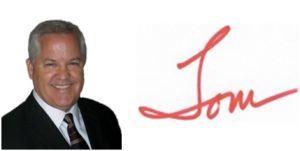One of my favorite Dilbert’s is the one about the quills. The strip starts with the question (paraphrasing) “Why is it that the best analysis technique is always the one that the analyst knows best?” Then, the next few frames show how different specialists recommend their specialty to solve the problem (e.g., the hard driving manager says “we just need to kick some hiney”). The last frame shows a porcupine who says that we “just have to stick them with quills!”
My experience in competitive intelligence (CI) is that organizations have favorite techniques to interpret the competitive environment. For example, many companies love SWOT (strength, weakness, opportunity, threat) diagrams. These may be useful however they are clearly not the right approach to model or interpret all issues of the competitive environment.
When a small number of approaches are used repeatedly, it may signal what I call “analysis poverty” in the organization. Analysis poverty is the condition whereby a large variety of problems are addressed by a narrow set of analytical techniques. The impact of analysis poverty is that the organization will not likely understand the environment appropriately and they will dampen the impact (through misapplication) of the techniques that they know best.
Analysis poverty presents the competitive intelligence professional with some challenges.
1. Education – This starts with the CI professional. It is important that he or she be regularly learning new approaches to understand the competitive landscape, model possible responses and mobilizing the organization for change. There are multiple avenues for expanding ones repertoire including the Society of Competitive Intelligence Professionals and training offered through organizations like the Academy of Competitive Intelligence.
2. Training – By this I mean training in the organization. This is a far more subtle task that the self learning. Most senior managers have little time to test “untried” techniques for critical issues. The “accepted” techniques (even if misapplied) may be preferred to change. The CI professional must learn to introduce alternatives appropriately to this audience. Usually I have found low risk settings an excellent place to try one new approach at a time.
3. Leverage – It is a fact of life that some organizations value some types of work done by those outside of the organization (e.g. industry analysts) over that produced internally. If this is true, then the challenge for the CI professional is to find those sources that are considered highly credible. Then, using the validation of the external source, the task is to customize an organization specific example.
4. Testing – Even when new techniques have not been accepted for general use in presentations by the CI professional, it is often completely acceptable for the CI analyst to test what is new for themselves. This seems obvious but may be overlooked if the presentation of the results is thought to be the critical success factor. Actually, the derived insights will be more valued over time and if the new techniques enable such insights, then their value will be easily illustrated after the suitable testing.
There are a couple of books that I have used to stimulate my thinking about analysis techniques.
- Business and Competitive Analysis: Effective Application of New and Classic Methods (Fleisher/Bensoussan)
- Strategic and Competitive Analysis: Methods and Techniques for Analyzing Business Competition (Fleisher/Bensoussan)
